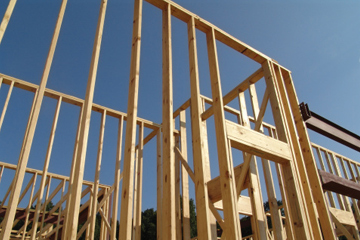Supply in construction
‘Supply’ is the flow of resources used to satisfy a demand, such as materials, labour, information, skills, and so on. It can also refer to competencies or combinations of resources. In very general terms, commodity suppliers tend to be more price focused, whilst strategic suppliers are more quality/delivery focused.
As an economic concept, supply can relate to the amount that is available at a specific price, or the amount that is available across a range of prices. Goods and services all have their own supply and demand patterns based on the principle that if the market demands something and consumers are willing to pay more for it, producers will add to the available supply. As the supply increases, the price falls provided there is the same level of demand until (in theory at least) an equilibrium point is reached at which the supply equals the demand and there is neither any wasted supply or shortages.
In the construction industry, the term ‘supplier’ refers to organisations contracted as part of the delivery of a built asset. Traditionally, suppliers were considered to be organisations contracted to provide physical supplies such as goods, materials, plant, and so on; however, use of the term is now much broader and PAS 1192-2 defines a supplier as any ‘…provider of services or goods either directly to the employer or to another supplier in a supply chain’.
For more information see: Supplier.
The term 'supply chain' refers to the interconnected hierarchy of supply contracts necessary to procure a built asset. Managing the supply chain involves understanding the breakdown and traceability of products and services, organisations, logistics, people, activities, information and resources that transform raw materials into a finished product that is fit for its purpose.
For more information see: Supply chain.
Supply chain management requires a holistic perspective and a view of organisations as parts of a process. It requires the ability to look beyond organisational boundaries, and a recognition of interdependencies.
NB The term ‘supply’ can also refer to the transmission of utilities through a network, for example, an electricity supply, water supply and so on.
[edit] Related articles on Designing Buildings Wiki
Featured articles and news
Homes England creates largest housing-led site in the North
Successful, 34 hectare land acquisition with the residential allocation now completed.
Scottish apprenticeship training proposals
General support although better accountability and transparency is sought.
The history of building regulations
A story of belated action in response to crisis.
Moisture, fire safety and emerging trends in living walls
How wet is your wall?
Current policy explained and newly published consultation by the UK and Welsh Governments.
British architecture 1919–39. Book review.
Conservation of listed prefabs in Moseley.
Energy industry calls for urgent reform.
Heritage staff wellbeing at work survey.
A five minute introduction.
50th Golden anniversary ECA Edmundson apprentice award
Showcasing the very best electrotechnical and engineering services for half a century.
Welsh government consults on HRBs and reg changes
Seeking feedback on a new regulatory regime and a broad range of issues.
CIOB Client Guide (2nd edition) March 2025
Free download covering statutory dutyholder roles under the Building Safety Act and much more.
Minister quizzed, as responsibility transfers to MHCLG and BSR publishes new building control guidance.
UK environmental regulations reform 2025
Amid wider new approaches to ensure regulators and regulation support growth.
BSRIA Statutory Compliance Inspection Checklist
BG80/2025 now significantly updated to include requirements related to important changes in legislation.























